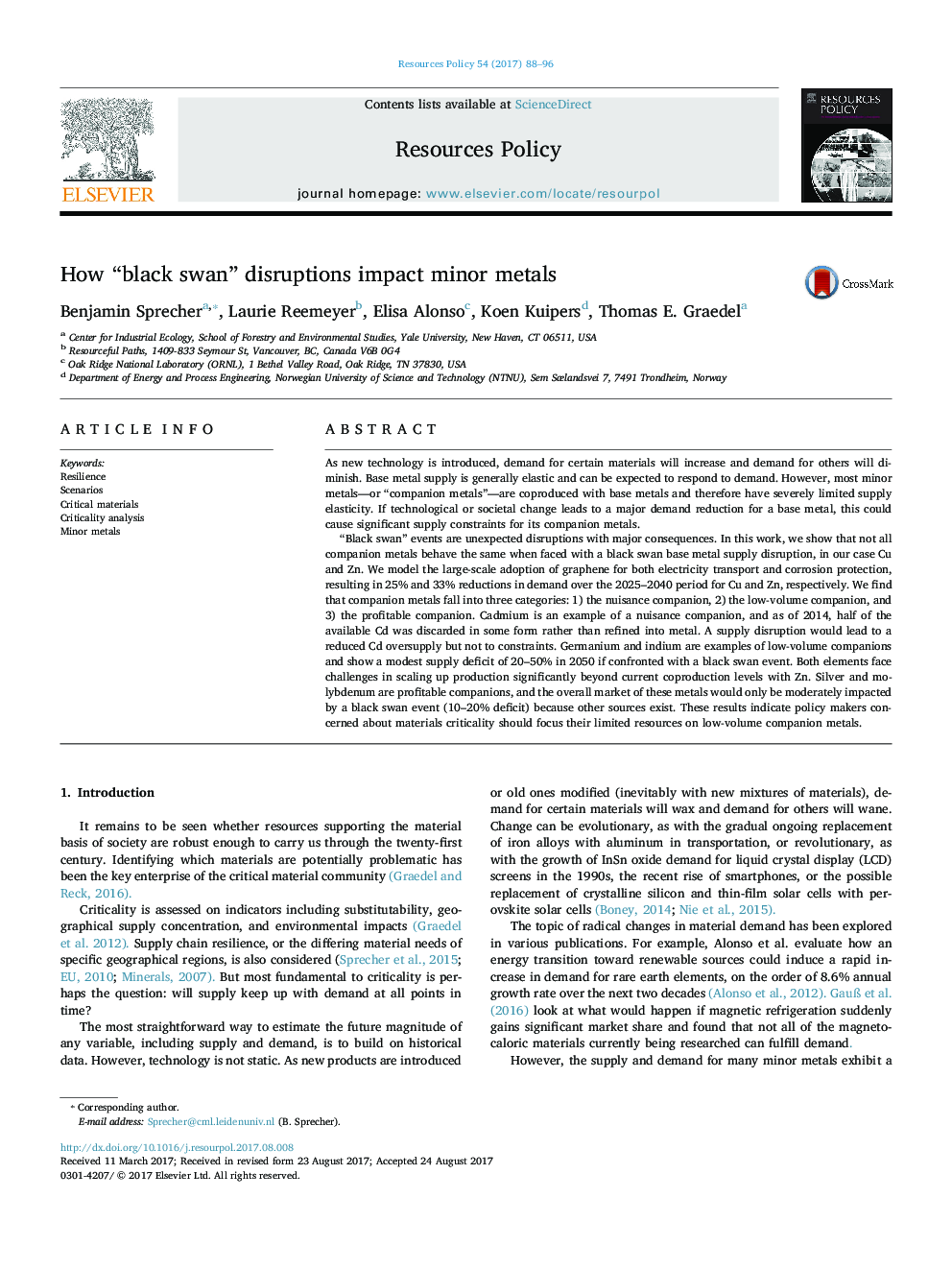| Article ID | Journal | Published Year | Pages | File Type |
|---|---|---|---|---|
| 7387600 | Resources Policy | 2017 | 9 Pages |
Abstract
“Black swan” events are unexpected disruptions with major consequences. In this work, we show that not all companion metals behave the same when faced with a black swan base metal supply disruption, in our case Cu and Zn. We model the large-scale adoption of graphene for both electricity transport and corrosion protection, resulting in 25% and 33% reductions in demand over the 2025-2040 period for Cu and Zn, respectively. We find that companion metals fall into three categories: 1) the nuisance companion, 2) the low-volume companion, and 3) the profitable companion. Cadmium is an example of a nuisance companion, and as of 2014, half of the available Cd was discarded in some form rather than refined into metal. A supply disruption would lead to a reduced Cd oversupply but not to constraints. Germanium and indium are examples of low-volume companions and show a modest supply deficit of 20-50% in 2050 if confronted with a black swan event. Both elements face challenges in scaling up production significantly beyond current coproduction levels with Zn. Silver and molybdenum are profitable companions, and the overall market of these metals would only be moderately impacted by a black swan event (10-20% deficit) because other sources exist. These results indicate policy makers concerned about materials criticality should focus their limited resources on low-volume companion metals.
Related Topics
Physical Sciences and Engineering
Earth and Planetary Sciences
Economic Geology
Authors
Benjamin Sprecher, Laurie Reemeyer, Elisa Alonso, Koen Kuipers, Thomas E. Graedel,
